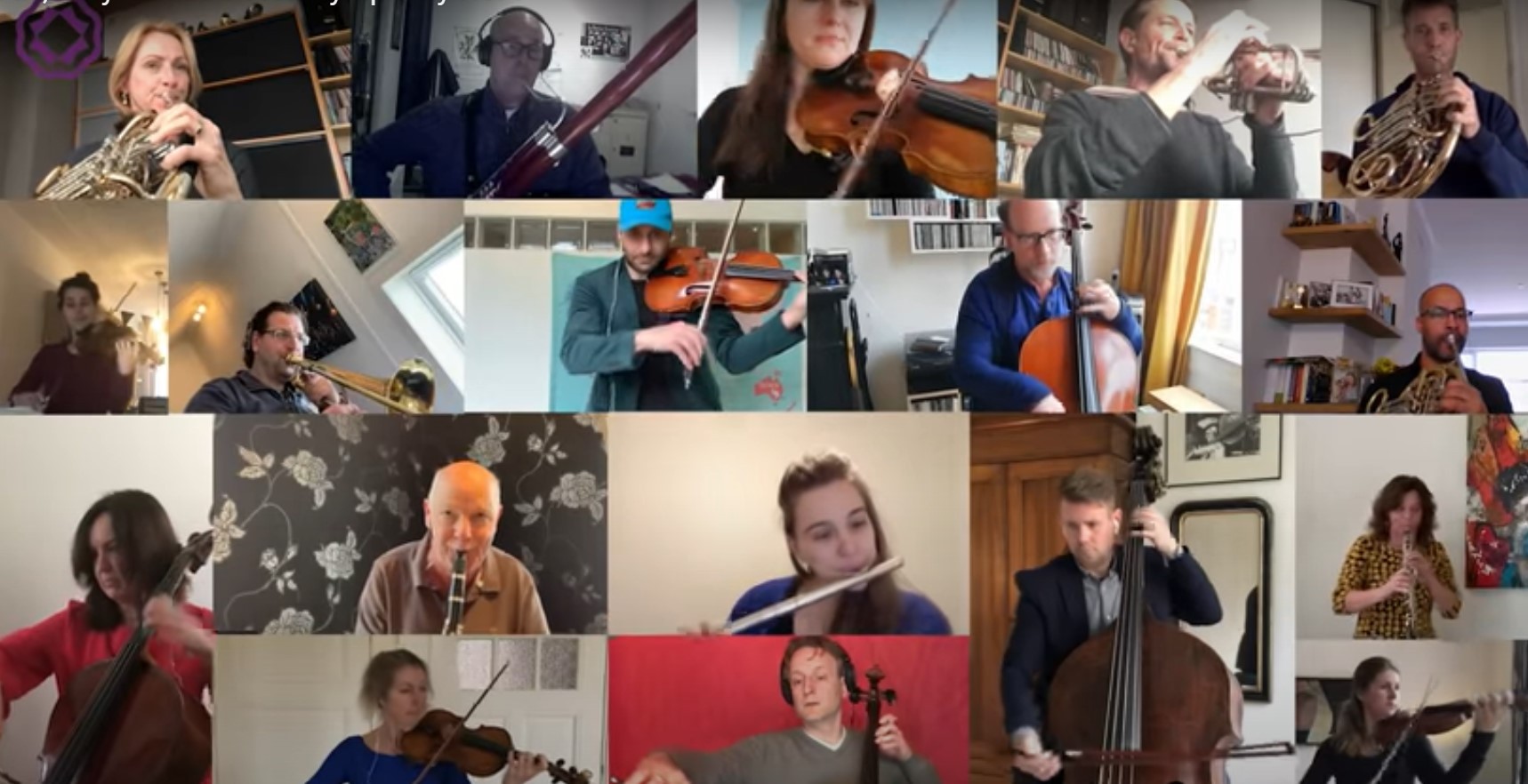Creativity, Arts and Culture In The Age Of Coronavirus
Guest Correspondence
SRQ DAILY
SATURDAY OCT 24, 2020 |
BY DR. LARRY THOMPSON
Screencap of Rotterdam Philharmonic Orchestra.
Last month, I shared my belief creativity is the path that will lead us through this pandemic. In the coming months, I will highlight areas of life and the economy in which creativity is not only keeping us going, but also driving innovations that may well remain as we emerge from this crisis. As Clay Lord, vice president of Americans for the Arts, said, “We know that there can be no recovery without creativity. On the other side of all of this, we cannot simply end up with the systems and structures that we had before.”
Nationally, arts and culture adds $877 billion to the annual economy, supporting 5.1 million American workers. The arts account for 4.5 percent of the annual GDP. An Americans for the Arts study commissioned by the Arts and Cultural Alliance of Sarasota County shows the nonprofit arts and cultural community in Sarasota generates $295 million in total economic activity and supports 7,445 full-time equivalent jobs. Plus, the plethora of arts and culture in this community distinguishes Sarasota from other Florida beach towns. However, according to a USA Today study, from April to July 2020, this sector lost about 2.7 million jobs and $150 billion in revenue nationally.
These losses are felt in local communities. More than 100,0000 theaters, galleries, performance venues and arts organizations closed their doors. The lights of Broadway are dark, and will remain so until 2021. New York’s Metropolitan Opera cancelled its 2020-21 season. Locally, most of the performing arts groups cancelled their seasons, at least through the end of this year. Most movie theaters remain closed, while television viewers are being subjected to a steady dose of reruns. Some galleries and museums reopened, though with comprehensive health and safety protocols in place.
Artists found ways to adapt. Most are swapping physical experiences for virtual ones. According to Barbara Stcherbatcheff for weforum.org, “Many artists have responded to this challenge with the kind of ingenuity you would expect from highly creative minds.”
Museums and galleries, including Sarasota Museum of Art of Ringling College and Galleries at Ringling College, transitioned from in-person exhibits to virtual ones. As a result, these organizations not only continued to engage with guests, but also expanded access to those who would not otherwise have been able to participate in the art and cultural offerings these institutions provide. These organizations are thinking creatively to deliver in-person experiences in a post-COVID world, considering tools like timed ticketing to help keep guests healthy. Even as plans for a return to normalcy begin, as they are for the Sarasota Art Museum (which reopened to the public on Oct. 16), the unexpected benefits from the necessary transition to virtual exhibits and experiences mean they are likely here to stay.
Musicians redefined live performance to stay connected to their art and their fans. The musicians of the Rotterdam Philharmonic Orchestra used technology to record a virtual rendition of Beethoven’s “Ode to Joy” from their homes. “We’re adjusting to a new reality and we’ll have to find solutions in order to support each other,” the musicians said in their video, which received more than 2 million views in less than two weeks.
Artists have reimagined how they deliver, and how we fans experience, arts and cultural events. Their creativity has expanded access to art in ways we would not have considered a year ago. Beyond keeping us connected, these new ways of bringing performance and art to the world made it possible for more people to feel the joy and inspiration that come with experiencing art. Maintaining, and even building upon, these creativity-fueled innovations that have expanded accessibility to art will benefit not only artists and arts organizations, but society at large
John Killacky, legislator in the Vermont House of Representatives, put these lessons learned in perspective, saying, “We are in this liminal moment imagining a post-pandemic art world. The opportunity in this crisis will be lost, if, in hindsight, we simply rush to put everything back together the way it was.”
Dr. Larry Thompson is president of Ringling College of Art & Design.
Screencap of Rotterdam Philharmonic Orchestra.
« View The Saturday Oct 24, 2020 SRQ Daily Edition
« Back To SRQ Daily Archive









